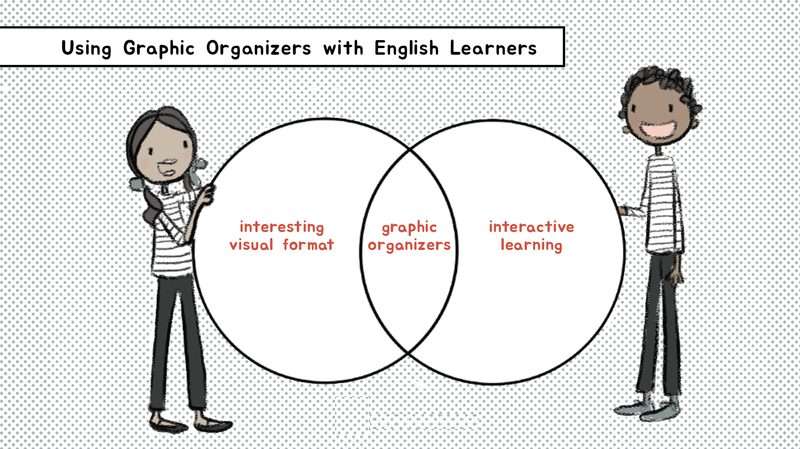
Since graphic organisers benefit both teachers and students equally, they are useful teaching and learning tools. By presenting material in an engaging, visual way, graphic organisers make teaching easier while also enhancing student engagement. These graphic aids can assist students in organising and demonstrating links between new concepts or in taking up difficult language.
When it comes to helping English Learners (EL) understand and become proficient in subject in their second language, graphic organisers are very useful. When a text has a graphic organiser with it, the information is easier for ELs to access and understand, even when a thick text can be daunting for them to read. By directly illustrating the relationship between concepts and ideas, graphic organisers help students learn by providing a visual representation of facts and information. With the aid of the organisers, students can approach their learning metacognitively and visualise what they are thinking.
Furthermore, by encouraging students to engage with the material through peer discussion, graphic organisers can raise student engagement. Assign students to complete a graphic organiser in pairs or small groups. Note how the organiser reduces stress while also requiring students to work together and have group discussions on the material.
Give ELs who require further assistance sentence stems/frames or a word bank to help them use academic language when completing the graphic organiser. If you’re using a more complicated visual organiser, fill in some of the spaces so that pupils have a support system to finish the organiser.
I’ve included a list of graphic organisers and their benefits for ELs below. They work in all academic areas and grade levels.
Instruction in Vocabulary
- A very useful pre-assessment to determine how well your pupils comprehend new vocabulary words is the Vocabulary Instruction Chart. It enables you to modify vocabulary training according to students’ requirements and past knowledge.
- The Frayer Model is a useful visual aid for vocabulary instruction. It includes sections with definitions, examples, and non-examples as well as a statement and a graphic depiction. After finishing the model with a partner, students can show it to other students.
In contrast and comparison
- Venn Diagram: In every subject area, this traditional graphic organiser is very helpful for comparing and contrasting ideas. Students are given a clear visual depiction of the similarities and differences between two objects or concepts when they see two overlapping circles.
- Top Hat Graphic Organiser: Using this top hat-shaped chart, students will efficiently arrange their comparisons. The bottom portion contains similarities, and the top two sections have differences.
Sort and Classify Information
- Bubble Map: An excellent general concept web that works well for brainstorming and can be applied to any kind of material or ideas, regardless of genre or topic. Ideal for group discovery.
- Timeline Organiser: Data that is presented in a logical sequence is easier to understand. To assist kids in understanding a tale or historical event, use this timeline.
- T-Chart: Three-Column A straightforward t-chart might be quite helpful at times. Use this visual organiser to assist students in discussing various groups of people during a specific historical period, describing characters, and explaining solids, liquids, and gases.
Adapted












